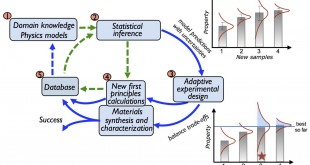As the world becomes increasingly interconnected, the demand for efficient data processing and real-time analytics grows exponentially. Traditional data centers are often overwhelmed by the sheer volume and velocity of data, especially in remote or data-intensive applications. This challenge is driving a revolutionary approach: satellite-based cloud computing, which leverages spaceborne data centers to bring edge and fog computing to new heights. Several space startups are integrating micro-data centers into their designs, offering computing power to process satellite imaging data or monitor distributed sensors for Internet of Things (IoT) applications.
Edge and fog computing represent a paradigm shift in how data is processed and managed. This approach reduces latency and bandwidth costs, crucial for real-time decision-making and efficient data management. Edge and fog computing represent a paradigm shift in data processing, moving computation and storage closer to the data source. Edge computing involves processing data on devices themselves, while fog computing extends this capability to a local network of devices, reducing latency and enhancing real-time decision-making. In the context of satellites, edge computing involves processing data directly on the satellite, while fog computing extends these capabilities to a network of satellites and ground stations.
Satellite based Cloud Computing Market
The market for satellite-based cloud computing is on an upward trajectory, reflecting the rapid growth and increasing interest in this transformative technology. Here’s an update based on the latest information:
Market Size and Growth
Recent data indicates a significant expansion in the market for satellite-based cloud computing. According to a report by NSR released in April 2022, the market for cloud service delivery via satellite is projected to generate $32 billion by 2031. This substantial figure underscores the accelerated growth and heightened interest in leveraging space-based technology for cloud computing.
Driving Forces
Several factors are driving the adoption of satellite-based cloud services:
- Proliferation of Satellite Constellations: The increase in Low-Earth Orbit (LEO), Medium-Earth Orbit (MEO), and Geostationary Earth Orbit – High Throughput Satellites (GEO-HTS) is a major catalyst. These constellations provide broader coverage and faster data transfer speeds, making satellite-based cloud services more practical and attractive.
- Technological Advancements: Improvements in satellite technology, including enhanced processing capabilities and energy efficiency, are making it feasible to deploy data centers in space.
- Demand for Ubiquitous Connectivity: As businesses and communities seek reliable internet and data services in remote and underserved areas, satellite-based solutions offer a viable alternative to traditional ground-based infrastructure.
Market Segments
The satellite-based cloud computing market is expected to be driven by four key segments:
- Satellite Communications: This segment remains the leader in terms of data traffic, enabling widespread connectivity and data transfer.
- Earth Observation (EO) Data Downlinks: Leading in revenue generation with a potential $10 billion opportunity. This includes ground station and data relay services, providing crucial data for environmental monitoring, agriculture, and disaster response.
- Cloud-Hosted Applications: Businesses can leverage cloud-based software without the need for extensive IT infrastructure, enabling cost-effective and scalable solutions.
- Cloud Storage/Processing for Geospatial Analytics: Processing and analyzing geospatial data, such as satellite imagery, directly in the cloud offers significant advantages for various industries, including defense, logistics, and urban planning.
Benefits and Challenges
Benefits:
- Ubiquitous Cloud Access: Satellite-based cloud services extend internet and data access to remote areas, bridging the digital divide.
- Reduced Latency: Edge computing applications benefit from reduced latency as data is processed closer to its source, enabling real-time decision-making.
- Lower Barriers to Entry: The adoption of cloud technology lowers the barriers for accessing and utilizing space-derived data services, fostering innovation and economic growth.
Challenges:
- Cost-Effectiveness: While advancements are being made, the high costs associated with launching and maintaining satellites remain a significant challenge.
- Regulatory and Security Issues: As satellite-based cloud computing evolves, regulations around data security and satellite operations need to keep pace to ensure safe and secure deployment.
Future Outlook
Satellite-based data centers represent a significant leap forward in data processing capabilities. As technology advances and costs become more manageable, this market is poised for substantial growth. The future of cloud computing is not limited to terrestrial infrastructure but extends to the stars, enabling real-time applications and innovations across various sectors.
In summary, the integration of satellite technology with cloud computing is transforming how we collect, process, and analyze data, driving new possibilities and efficiencies in an increasingly connected world. As we look to the future, the sky is not the limit—it’s just the beginning.
 International Defense Security & Technology Your trusted Source for News, Research and Analysis
International Defense Security & Technology Your trusted Source for News, Research and Analysis

